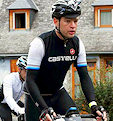It started badly - with the most expensive free breakfast I've ever eaten.
Flying to Geneva to register for the race, I spotted someone with a Haute Route bag and a bike box in the airport - so wandered over to have a chat. John was on the same flight out as me and had ridden it before, so after checking in, dropping off our bags and going through security we went for breakfast.
I had a voucher for the new Wagamama's in the terminal, so we headed there and talked kit, tips, tricks and anything else I could get out of him ahead of what was set to be the hardest week's riding of my life.
Then we looked at the clock.
We'd missed our flight: our free breakfast had cost us £65 each in transfer fees, and what had been a tight schedule now became almost impossible.
Following a mad rush through Geneva, a bag going missing, a spot of illegal parking, missing the parade lap, missing the mandatory pre-race briefing, and pleas to the event organisers not to shut the key parts of the registration village JUST yet, we made it. Barely.
Now all that was left was to ride it.
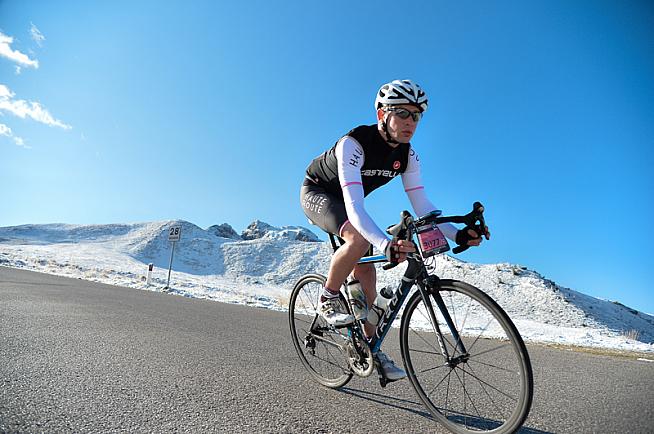
So what is the Haute Route then?
Haute Route began five years ago, when organisers OC Sport set out to create the hardest amateur race in the world. A seven-day stage race through the Alps. Think a Tour de France mountain stage every day for six days, with an individual time trial up a mountain thrown in on top for fun. Pure climbing and descending across the highest mountains they could find.
Then they decided to have two - one in the Alps, one in the Pyrenees - and run them back to back. Last year they added a third week - in the Dolomites and Swiss Alps - letting people race a full 21 days through the mountains if they chose.
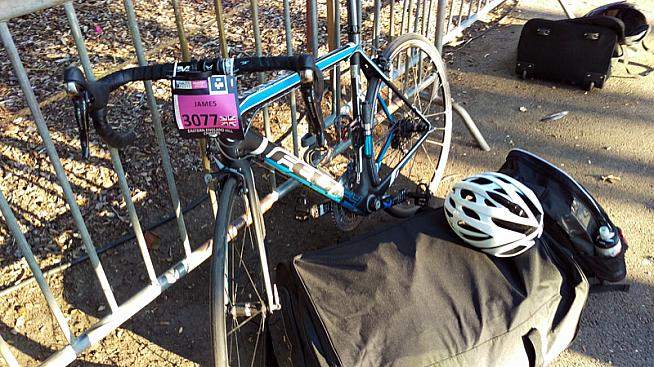
And it is a race. Every climb timed and rider tracked with electronic chips, a broom wagon and a hard cut-off seeing those not fast enough thrown out of the GC. There are also prizes and presentations for the top teams, men and women each day, as well as for the overall GC.
The organisers supply hotel accommodation, luggage transport, signposted routes with marshals stationed at key junctions, feed stations, en-route mechanical and medical assistance and timing during the ride (along with an occasional police escort), as well as a meal, showers and massages after it. There's also a race village at the finish and daily briefings about the stage ahead.
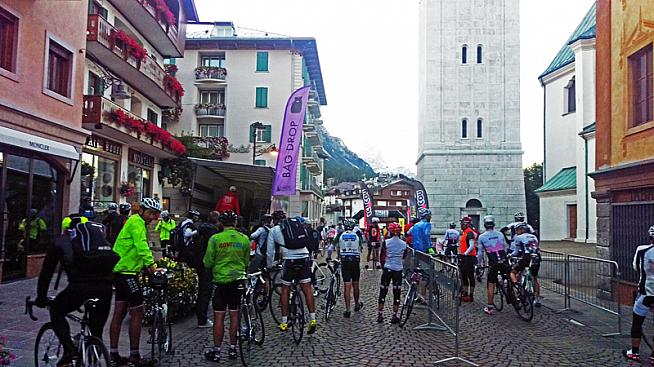
Ascending to heaven - the climbs
My version of the Haute Route (Dolomites Swiss Alps) was set to cover 906km with 19,700m of climbing in seven days' riding from Geneva to Venice over some of the most famous, highest and hardest climbs in the region.
The Gavia, the Giau, Furkapass, the Bernia, Pordoi and a lot more - 11 summits over 2,000m high, another seven more than 1,000m up.
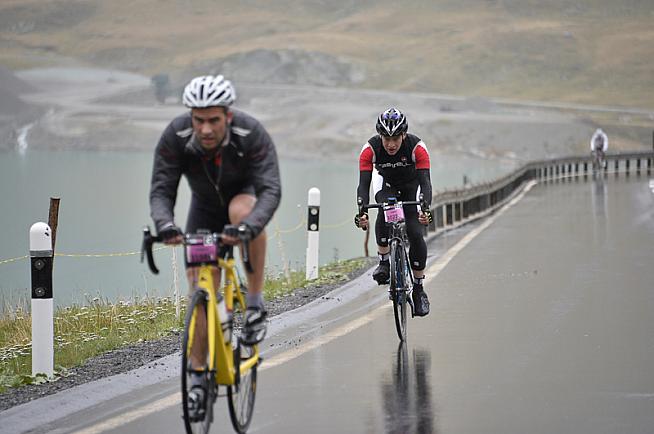
One monster climb was 30km long, rising some 1,700m. With sections over 10%. There were climbs to start the day (Gavia, Giau), ones in the middle (Furkapass, Morgins) and others to finish it (Crans Montana, Oberalppass).
Detailed briefings along with the daily top-tube stickers meant we knew what was coming, most of the time, but that didn't make the riding easy.
The Gavia and the Giau are beasts - rising above 2,500m high, with vicious sections where the percentages kick well over 10% - sometimes for kilometers on end. 8% sections felt like a descent, I "spun" my legs in them to recover and get rid of the lactic acid.
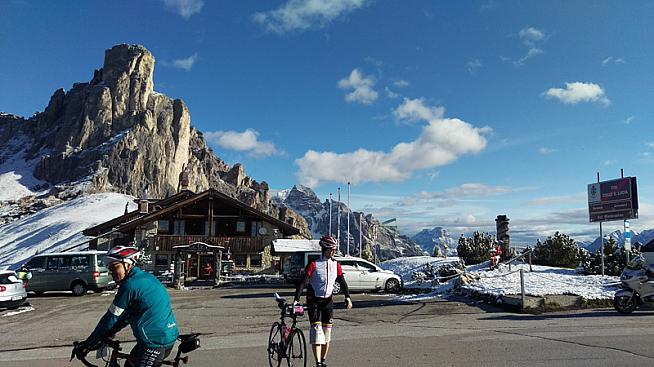
The Furkapass covers more than 20km, winding through the Swiss Alps past a waterfall. We rode in the rain, without a car (or in many cases any other riders) to be seen - it was a place of almost perfect peace.
Cruellest of all was one we'd been told was simple - 17km at 6% to end the stage. It wasn't simple. There was a 3km descent in the middle of it, and instead of a (relatively) gentle 6% to end the day it finished with 10km at a grinding 10% average as the heat beat down on us and riders missed the cut-off time in droves. Think Ventoux in the heat and you're most of the way there.
I bounced out of the saddle a lot to change muscle groups, punch through a ramp or round a corner, pose for a photographer or even to just give my bum a rest for a bit. I spent quite literally hours grinding away with a cadence under 60 desperately wishing I had more than a 36:30 gear to spin in.
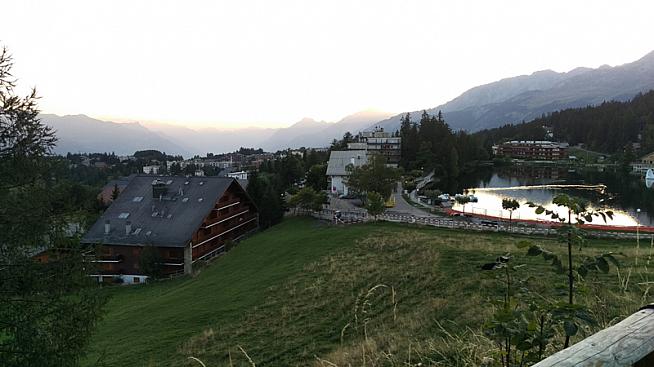
Looks can't kill, views can
Of course, after the climbs came the descents. The nature of the route meant there were days where we descended for more than 4,400m overall as we lost height from the mountains and dropped down to sea level.
There were fast descents, technical descents, descents on roads so perfect I could kiss them, and others that seemed determined to break my wrists as they juddered through broken tarmac.
We descended in the sunshine and driving rain, from snow-capped peaks with biting wind-chill to hot days when the jersey was unzipped to let in the breeze.

I sat up and stretched, got on the drops and drove, and at some points went "full Sagan" with my bum wedged under my saddle and torso pressed flat along my top tube.
And amid all of this was some of the most beautiful landscape I've ever seen. A sheer stone wall, sliced through with cloud, 2,000m high - making the CGI on Game of Thrones seem tame and unambitious.
Trees so tiny they looked like toys, painted on a child's bedroom wall.
At one point an Israeli rider accelerated as hard as he could to catch me, just to point right and yell at the scenery shouting: "It's magnificent! Utterly magnificent!"
At another point, I looked up and caught my breath, stunned (almost literally) at the vista in front of me. The rainclouds were spilling over the side of a mountain and down its side as if it were the bubbling cauldron of Hecate herself.
This was when I found out that looks can't kill, but views can. I tore my eyes from the view, glanced at the road and realised that amid nature's splendour I'd missed a hairpin turn that I was approaching fast. I barely stayed on my bike as the brakes went on hard and I somehow didn't spill over the side of the mountain.
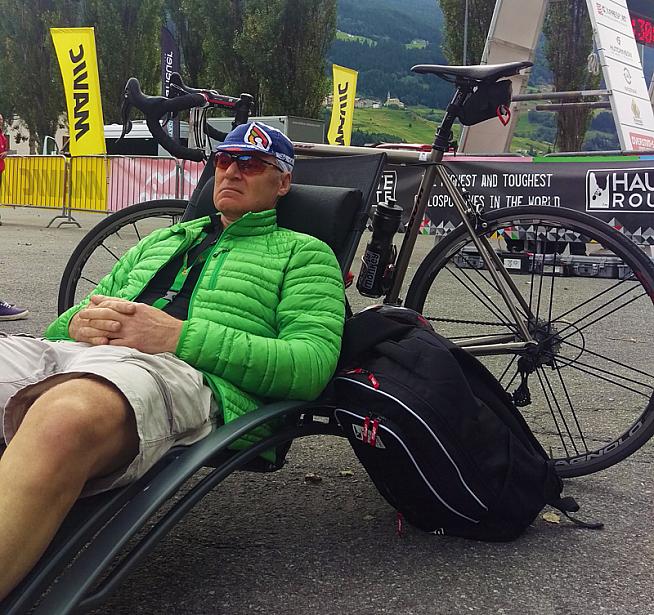
Weather
Perhaps the hardest thing of all to deal with (including the climbs) was the weather.
One day started at 10 degrees, dropped to below freezing at the top of a climb and ended at 28 degrees.
How can you dress for that? I went with the thickest gilet I could fit in my jersey pocket, arm warmers and exposed knees and fingerless gloves. Coming off the top of the snow-capped climb (the 2,236m Giau) was a 30km+ descent. I lost feeling in my fingers and toes. Shivering on the bike and looking for sunshine to stop in, I basked like a lizard on a bench for about 10 minutes halfway down.

But at least it was dry that day. Other days mixed temperatures in low single digits, rain, and later sun so hot I actually got sunburn on the back of my neck despite seeing rain melting snow in the morning.
Then there were simple extremes. The final climb on the first stage took place in will-sapping heat of 36 degrees without a breath of wind. I barely made it up after 174km and 4,000m of climbing - constantly searching for shade and at one point pulling to the side of the road and more or less plunging head first into a roadside fountain. I was dry again after 5 minutes.
Another day was a simple cold, wet, windy one - waterproofs and neoprene gloves saw me though OK, although descending in the fog on wet mountain roads was - um - interesting.
Another day began with a 50km police-escorted peloton through the driving rain. Wheel spray saw all of me soaked to the skin in five minutes, with another hour of it to endure before the first climb spread the field out.

Again! Again!
I've never been faster, slower, wetter, colder or hotter on a bike than I was during the Haute Route. I was utterly exhausted and exhilarated seemingly in turn, riding with an irrepressible smile and an occasional song on my lips one minute, and struggling for breath with burning legs the next.
The cinematography was by God, literally, and the most beautiful I've ever ridden through - when you could see it through the driving rain; the camaraderie superb.
But there's one thing above all others to say about this race. Exhausted, overheated, hungry and aching in nine places after seven days of the hardest riding of my life - I sat in the finish village after the final stage with some of my fellow riders... planning.
I mean, what was I going to do on Monday, or the week after? The Haute Route was over and there would be a hole in my life as a result. At least, until next year...

2 Comments

